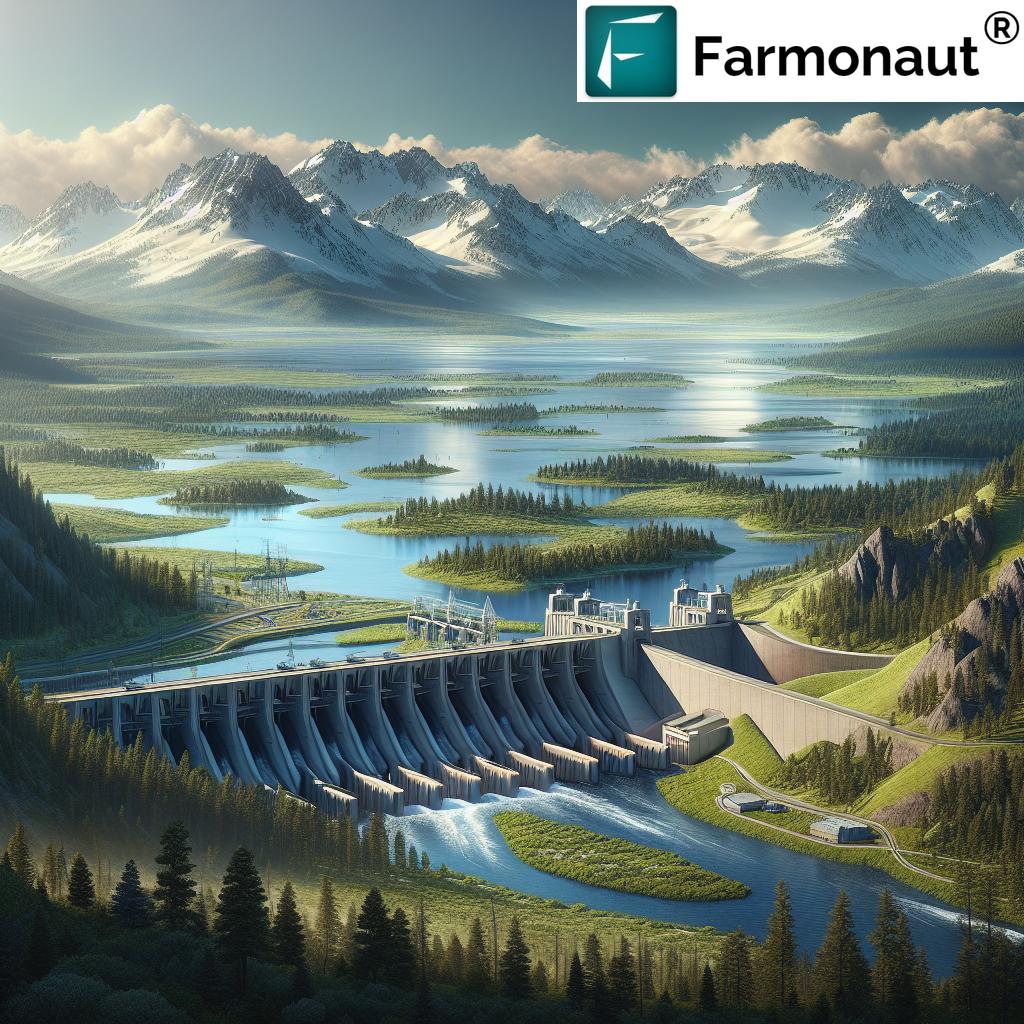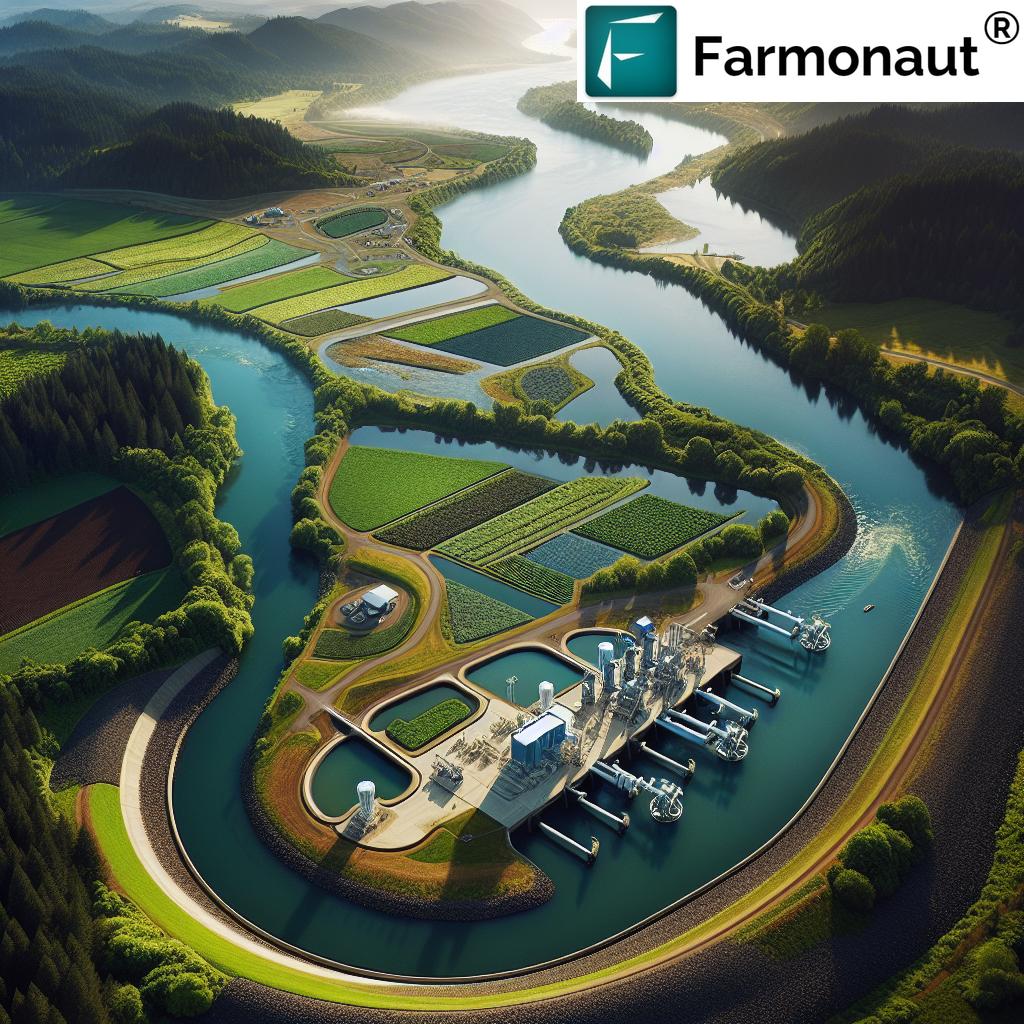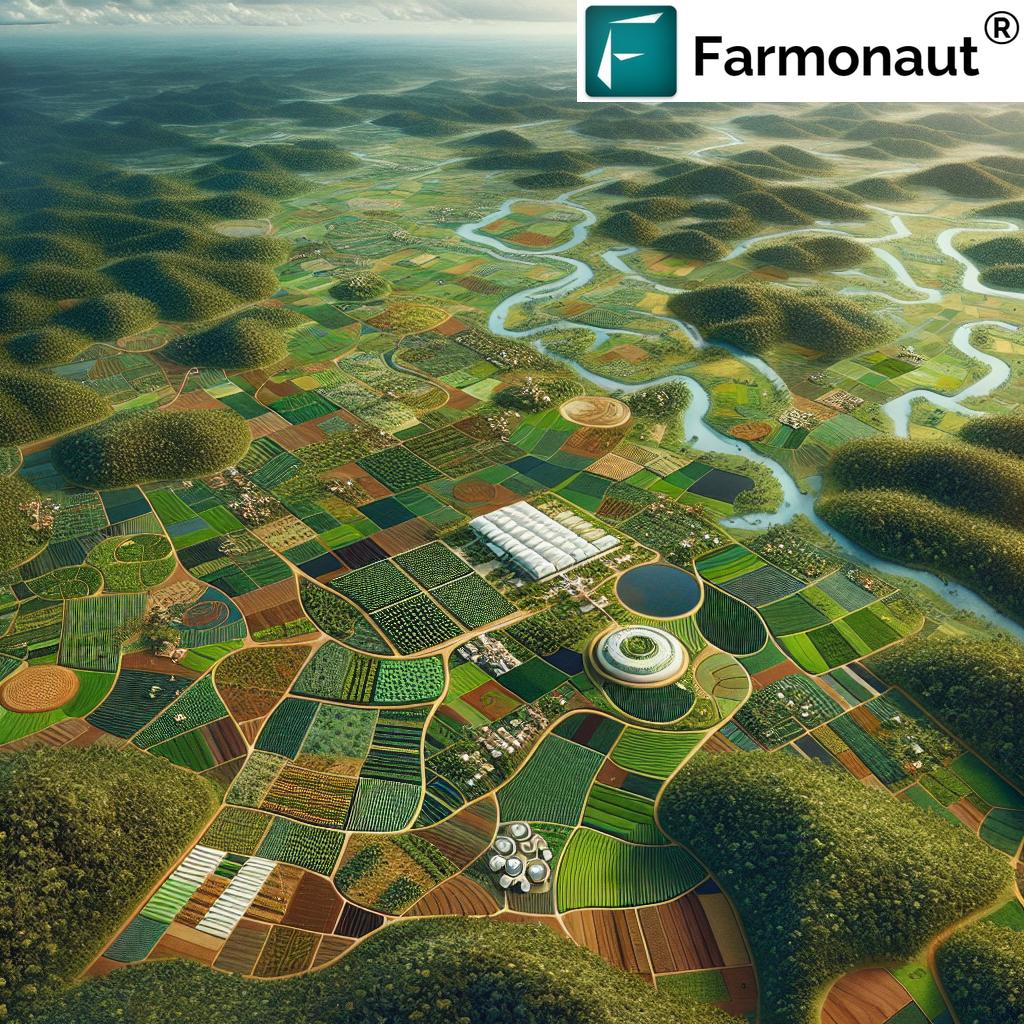Sustainable Water Management: Protecting Oregon’s Malheur Basin from Floods and Preserving the Environment

“Oregon’s Malheur Basin flood control systems manage water levels across 9,930 square miles, balancing ecosystem needs with human safety.”
In the heart of the Pacific Northwest, Oregon’s Malheur Basin stands as a testament to the intricate balance between human needs and environmental preservation. As we navigate the challenges of climate change and increasing water demands, sustainable water management has become more critical than ever. In this comprehensive exploration, we’ll delve into the innovative strategies and engineering marvels that protect this vital region from floods while safeguarding its rich ecosystem.
Understanding the Malheur Basin: A Delicate Ecosystem
The Malheur Basin, spanning nearly 10,000 square miles, is a complex network of rivers, wetlands, and agricultural lands. This diverse landscape plays a crucial role in Oregon’s ecology and economy, supporting wildlife habitats, agricultural production, and community development. However, the basin faces ongoing challenges, particularly in flood protection and water resource management.
As climate patterns shift, the region has experienced more frequent and intense atmospheric river events, bringing sudden surges of warm, moisture-laden air from the tropics. These events can lead to rapid snowmelt and increased rainfall, putting immense pressure on the basin’s water management systems.
Flood Protection in the Pacific Northwest: A Multifaceted Approach
Protecting the Malheur Basin from floods requires a comprehensive strategy that combines cutting-edge technology, engineering expertise, and environmental consciousness. The U.S. Army Corps of Engineers (USACE) Walla Walla District plays a pivotal role in this effort, employing a range of techniques to manage water resources effectively.
- Advanced Monitoring Systems: Real-time data collection and analysis allow for proactive flood management.
- Reservoir Operations: Strategic control of water levels in reservoirs helps mitigate flood risks.
- Levee Maintenance: Regular inspections and upgrades ensure the integrity of flood control structures.
- Environmental Flow Strategies: Balancing water release to support both flood control and ecosystem health.
These efforts are crucial in safeguarding communities like Vale, Oregon, which faced potential evacuation during a recent atmospheric river event. The USACE’s swift action in adjusting dam releases and monitoring levee integrity prevented a disaster, showcasing the importance of proactive water management.
Innovative Water Infrastructure Engineering
At the core of sustainable water management in the Malheur Basin is a network of sophisticated infrastructure. This includes reservoirs, pump stations, navigation locks, and flood control structures. Each component is designed with dual purposes: to protect against floods and to support the region’s diverse needs, from irrigation to hydropower generation.

Jonathan Roberts, Chief of the Hydraulics and Hydrology Branch at the Walla Walla District, emphasizes, “Our district’s engineering expertise is critical to the success of our operations and mission. The innovative design and maintenance of infrastructure enable us to balance operational demands with stakeholder interests, ensuring sustainable water management.”
This engineering proficiency extends beyond mere structural design. It encompasses a holistic approach to water management that considers:
- Seasonal flow patterns
- Environmental impact assessments
- Long-term climate projections
- Community needs and safety
By integrating these factors, the USACE can make informed decisions that protect against floods while supporting the basin’s ecological health.
Environmental Preservation: A Core Priority
While flood protection is paramount, the Walla Walla District never loses sight of its commitment to environmental stewardship. The Malheur Basin is home to diverse wildlife and plant species, many of which depend on specific water conditions to thrive. Balancing these ecological needs with flood control and human water usage is a complex challenge that requires innovative solutions.
One such solution is the implementation of environmental flow strategies. These carefully designed water release patterns from reservoirs mimic natural river flows, supporting aquatic habitats and improving water quality. This approach has proven effective in sustaining downstream wetlands and riparian habitats, crucial for the basin’s biodiversity.
“Our focus on incorporating environmental flow strategies into reservoir operations has a profound impact on local ecosystems,” Roberts explains. “Programs like the Sustainable Rivers Program allow us to modernize our practices and ensure that our flood protection efforts also contribute to environmental preservation.”
This commitment to sustainability aligns with the growing global emphasis on eco-friendly water management practices. By prioritizing both flood protection and environmental health, the Walla Walla District sets a standard for responsible water resource management in the face of climate change.
Climate Resilience in Water Systems
“Atmospheric river events can increase Pacific Northwest river flows by up to 1000%, challenging sustainable water management strategies.”
As climate patterns become more erratic, building resilience into water management systems is crucial. The Malheur Basin’s approach to climate resilience involves several key strategies:
- Adaptive Management: Continuously updating operational plans based on climate projections and real-time data.
- Infrastructure Upgrades: Enhancing existing structures to withstand more extreme weather events.
- Ecosystem-Based Adaptation: Utilizing natural systems like wetlands to absorb excess water and reduce flood risks.
- Collaborative Planning: Engaging with local communities, environmental groups, and other stakeholders to develop comprehensive resilience strategies.
These efforts ensure that the basin’s water management systems can adapt to changing conditions while continuing to protect communities and preserve the environment.
Hydropower Generation and Environmental Preservation: A Delicate Balance
The Malheur Basin’s water infrastructure serves multiple purposes, with hydropower generation being a significant component. However, balancing energy production with environmental needs presents unique challenges. The USACE has implemented innovative approaches to address this, including:
- Fish-friendly turbine designs
- Timed water releases to support fish migration
- Adaptive management of reservoir levels to optimize both power generation and ecosystem support
These strategies demonstrate that with careful planning and advanced technology, hydropower generation can coexist with environmental preservation efforts.
River Basin Flood Control: Techniques and Innovations
Effective flood control in the Malheur Basin relies on a combination of structural and non-structural measures. Some key techniques include:
- Levee Systems: Engineered embankments that contain river flows during high-water events.
- Flood Storage Reservoirs: Large water bodies designed to capture and slowly release excess water.
- Channel Improvements: Modifications to river channels to increase their capacity and improve flow.
- Floodplain Management: Regulations and zoning to limit development in flood-prone areas.
Innovations in this field include the use of green infrastructure, such as constructed wetlands and permeable surfaces in urban areas, to reduce runoff and mitigate flood risks naturally.
Reservoir Operations and Seasonal Patterns
Managing reservoirs in the Malheur Basin requires a deep understanding of seasonal patterns and their impact on water levels. The USACE employs sophisticated forecasting models to anticipate changes in water inflow and adjust reservoir operations accordingly.
Key considerations in reservoir management include:
- Snowpack levels and melt rates
- Seasonal rainfall patterns
- Agricultural water demands
- Environmental flow requirements
By carefully balancing these factors, reservoir operators can optimize water storage for flood control while ensuring adequate supply for other uses throughout the year.
Community Safety and Public Engagement
Protecting communities from flood risks goes beyond physical infrastructure. The Walla Walla District places a strong emphasis on public education and engagement. This includes:
- Regular community meetings and workshops on flood preparedness
- Development of evacuation plans and early warning systems
- Collaboration with local emergency management agencies
- Public outreach campaigns to raise awareness about flood risks and mitigation strategies
These efforts ensure that residents are not only protected by physical flood control measures but are also empowered with knowledge and resources to respond effectively during flood events.
Sustainable Water Management Strategies: A Comparative Analysis
To better understand the various approaches to water management in the Malheur Basin, let’s examine a comparison of different strategies:
| Strategy Name | Primary Purpose | Estimated Flood Risk Reduction (%) | Environmental Impact Score (1-10) | Implementation Cost Range ($) | Climate Resilience Rating |
|---|---|---|---|---|---|
| Reservoir Operations Optimization | Flood Control | 70% | 7 | 1-5 million | High |
| River Basin Flood Control Infrastructure | Flood Control | 85% | 5 | 10-50 million | Medium |
| Atmospheric River Monitoring Systems | Flood Control | 60% | 9 | 2-10 million | High |
| Seasonal Water Level Management | Environmental Flow | 40% | 9 | 500,000-2 million | Medium |
| Urban Stormwater Management | Flood Control | 50% | 8 | 5-20 million | High |
| Rural Floodplain Restoration | Environmental Flow | 30% | 10 | 1-10 million | High |
This comparison highlights the diverse approaches to water management in the Malheur Basin, each with its own strengths and trade-offs. The most effective strategy often involves a combination of these approaches, tailored to the specific needs and conditions of the region.
The Role of Technology in Water Management
Advanced technology plays a crucial role in modern water management systems. In the Malheur Basin, several innovative tools are employed to enhance flood protection and environmental preservation efforts:
- Satellite-Based Monitoring: Remote sensing technologies provide real-time data on water levels, soil moisture, and vegetation health across the basin.
- AI-Powered Forecasting: Machine learning algorithms analyze historical data and current conditions to predict flood risks with greater accuracy.
- IoT Sensor Networks: A network of connected sensors throughout the basin provides continuous data on water quality, flow rates, and infrastructure performance.
- Digital Twin Technology: Virtual models of the basin’s water systems allow for scenario testing and optimization of management strategies.
These technological advancements enable more precise and responsive water management, improving both flood protection and environmental outcomes.
Challenges and Future Outlook
Despite the significant progress made in sustainable water management in the Malheur Basin, several challenges remain:
- Increasing water demands from growing populations and agricultural expansion
- More frequent and severe extreme weather events due to climate change
- Aging infrastructure requiring costly upgrades and maintenance
- Balancing competing water needs for agriculture, urban use, and environmental preservation
Addressing these challenges will require continued innovation, collaboration, and investment in sustainable water management practices. The future outlook for the Malheur Basin involves:
- Further integration of green infrastructure and nature-based solutions
- Enhanced use of data analytics and AI in water management decision-making
- Increased focus on water conservation and efficiency measures
- Development of more robust climate adaptation strategies
By proactively addressing these challenges and embracing innovative solutions, the Malheur Basin can continue to serve as a model for sustainable water management in the face of changing environmental conditions.
Conclusion: A Model for Sustainable Water Management
The sustainable water management practices implemented in Oregon’s Malheur Basin offer valuable lessons for regions worldwide facing similar challenges. By balancing flood protection with environmental preservation, leveraging advanced technology, and fostering community engagement, the basin demonstrates that it’s possible to safeguard human interests while protecting vital ecosystems.
As we look to the future, the strategies and innovations developed in the Malheur Basin will undoubtedly play a crucial role in shaping water management practices globally. The success of these efforts underscores the importance of holistic, adaptive approaches to water resource management in an era of climate uncertainty.
FAQs
- What is the main challenge in managing water resources in the Malheur Basin?
The primary challenge is balancing flood protection with environmental preservation while addressing increasing water demands and climate change impacts. - How do atmospheric rivers affect flood risks in the Pacific Northwest?
Atmospheric rivers can dramatically increase river flows, potentially by up to 1000%, posing significant flood risks and challenging water management strategies. - What role does technology play in sustainable water management?
Technology, including satellite monitoring, AI-powered forecasting, and IoT sensor networks, enables more precise and responsive water management, improving both flood protection and environmental outcomes. - How does the USACE balance hydropower generation with environmental preservation?
The USACE employs fish-friendly turbine designs, timed water releases, and adaptive reservoir management to optimize both power generation and ecosystem support. - What are some innovative flood control techniques used in the Malheur Basin?
Innovative techniques include green infrastructure, constructed wetlands, permeable surfaces in urban areas, and advanced levee systems combined with floodplain management.
By implementing these sustainable water management practices and continually innovating, we can ensure the long-term health and resilience of vital water resources like the Malheur Basin, benefiting both communities and ecosystems for generations to come.
















